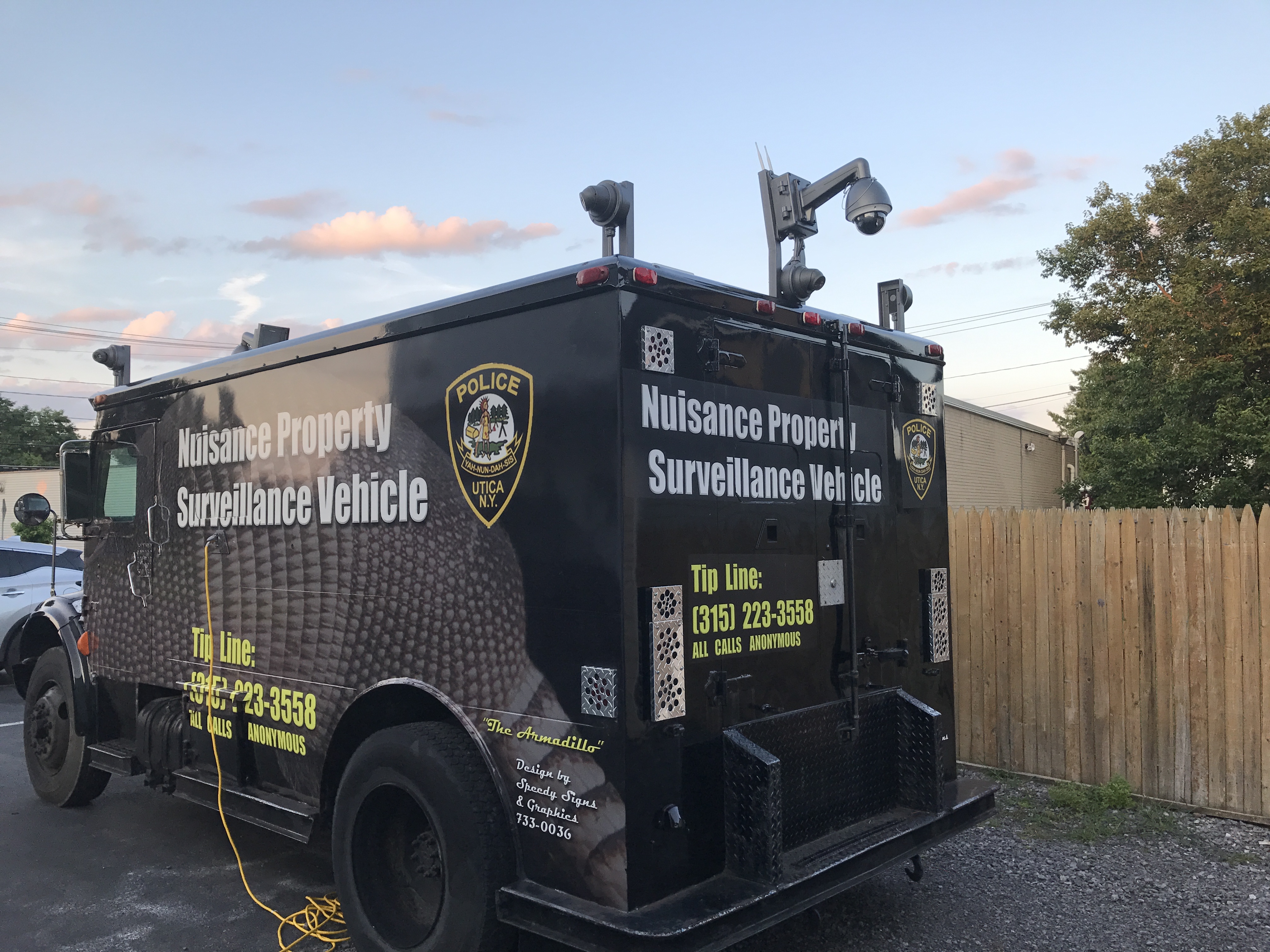Hikvision Secures 'The Armadillo,' Repurposed Armored Truck Deployed as Neighborhood Crime Deterrent
Equipped with multiple Hikvision security cameras, Utica Police Department uses truck in high-risk communities
CITY OF INDUSTRY, Calif. – March 15, 2018 – Hikvision USA Inc., a leading provider of artificial intelligence, machine learning, robotics and other emerging technologies, and the world’s largest manufacturer of video surveillance products and solutions, worked with Hikvision integrator TAS Electronics in New York to furnish a full-scale surveillance system for “The Armadillo,” a repurposed armored truck the Utica Police Department (UPD) uses to deter crime in the community.
“When the decision was made to upgrade the Armadillo the immediate concern was the camera system, because it is the lifeblood of any high quality digital video recording network. Knowing this, we demanded the best equipment available,” said Edward Noonan, deputy chief of police for the UPD. “Hikvision and TAS Electronics provided us with high resolution cameras that have the ability to see in the dark, and we can control these cameras remotely through an app on our smartphones with remarkably high resolution.”
A case study about the project was posted today on the Hikvision website.
Six Hikvision turret cameras and two Hikvision PTZ dome cameras were installed on the vehicle for comprehensive panoramic surveillance. To provide 65 days of video storage and recovery, TAS installed a 32-channel Hikvision Pro-Series DS-9632NI-I8 NVR with 12 TB of storage.
Hikvision’s technology, combined with TAS’ expertise, resulted in a resource that improves crime monitoring and deterrence, making the streets safer for the citizens of Utica.
“The Armadillo is a great example of our integrators collaborating with a local police department to deliver improved safety and security to their community,” said Alex Asnovich, Head of Marketing, Hikvision North America.
About Hikvision:
Hikvision is a leading provider of artificial intelligence, machine learning, robotics and other emerging technologies, and is the world’s largest video surveillance manufacturer. Featuring an extensive and highly skilled R&D workforce, Hikvision manufactures a full suite of comprehensive products and solutions for a broad range of vertical markets. Beyond security, Hikvision products provide important data and business intelligence for end users, which can be used to enable greater commercial success and more efficient operations. Committed to the utmost quality and safety of its products, Hikvision encourages partners to take advantage of the many cybersecurity resources Hikvision offers, including the Hikvision Security Center.
###
Martha Entwistle, Senior Manager Strategic Communications
Hikvision USA Inc.
Martha.entwistle@hikvision.com
‘The Armadillo,’ a repurposed armored truck used by the Utica Police Department, equipped with Hikvision surveillance cameras.

